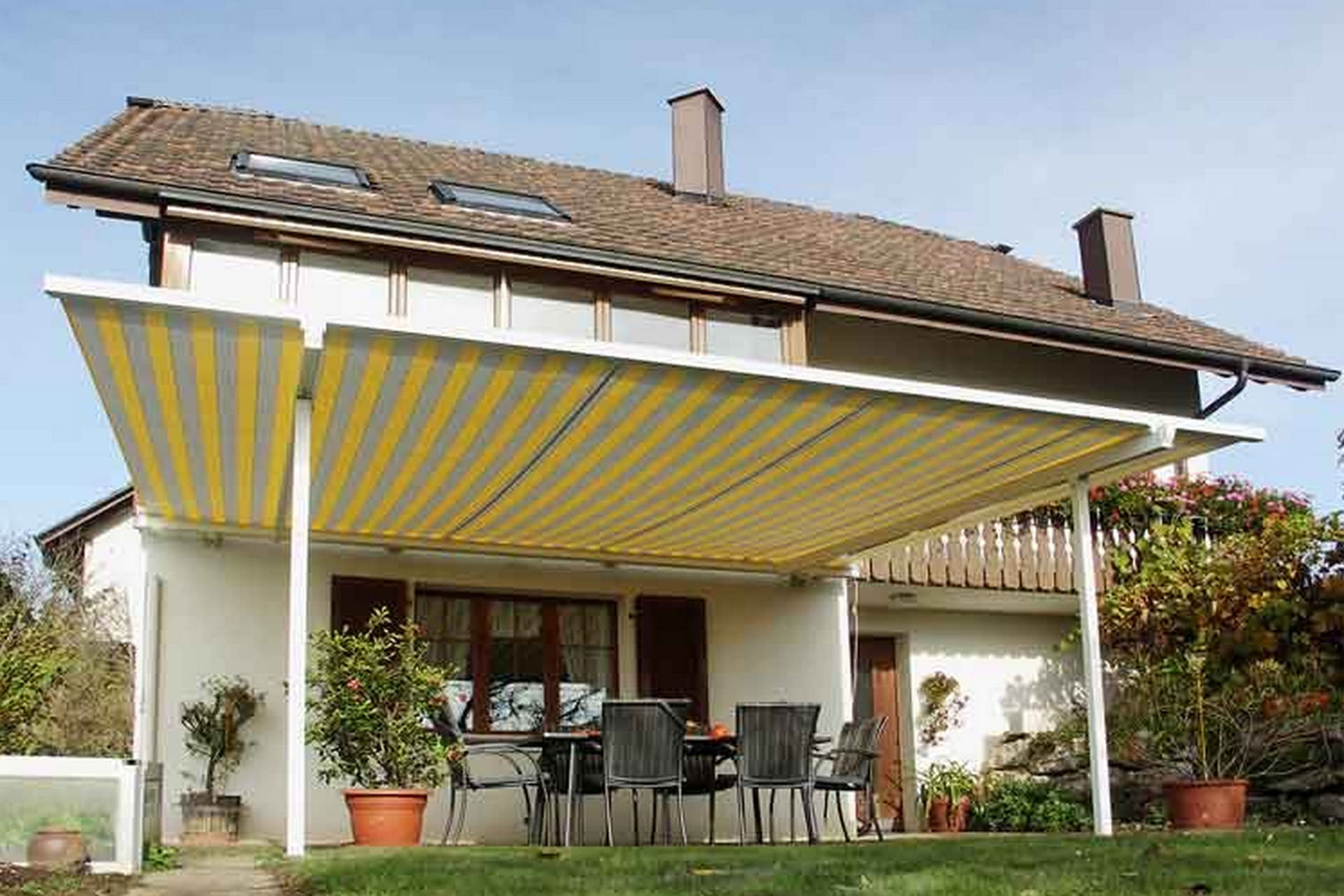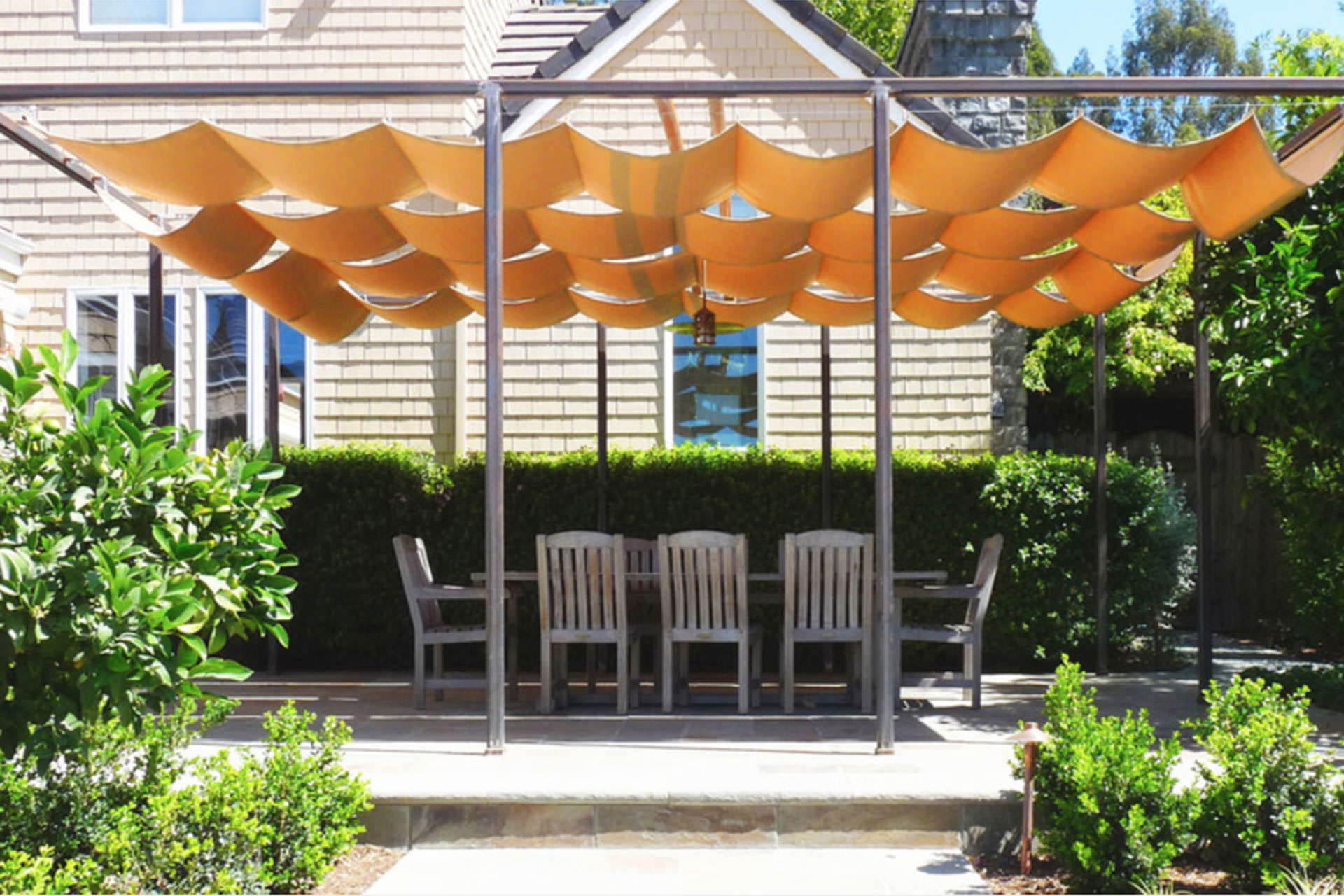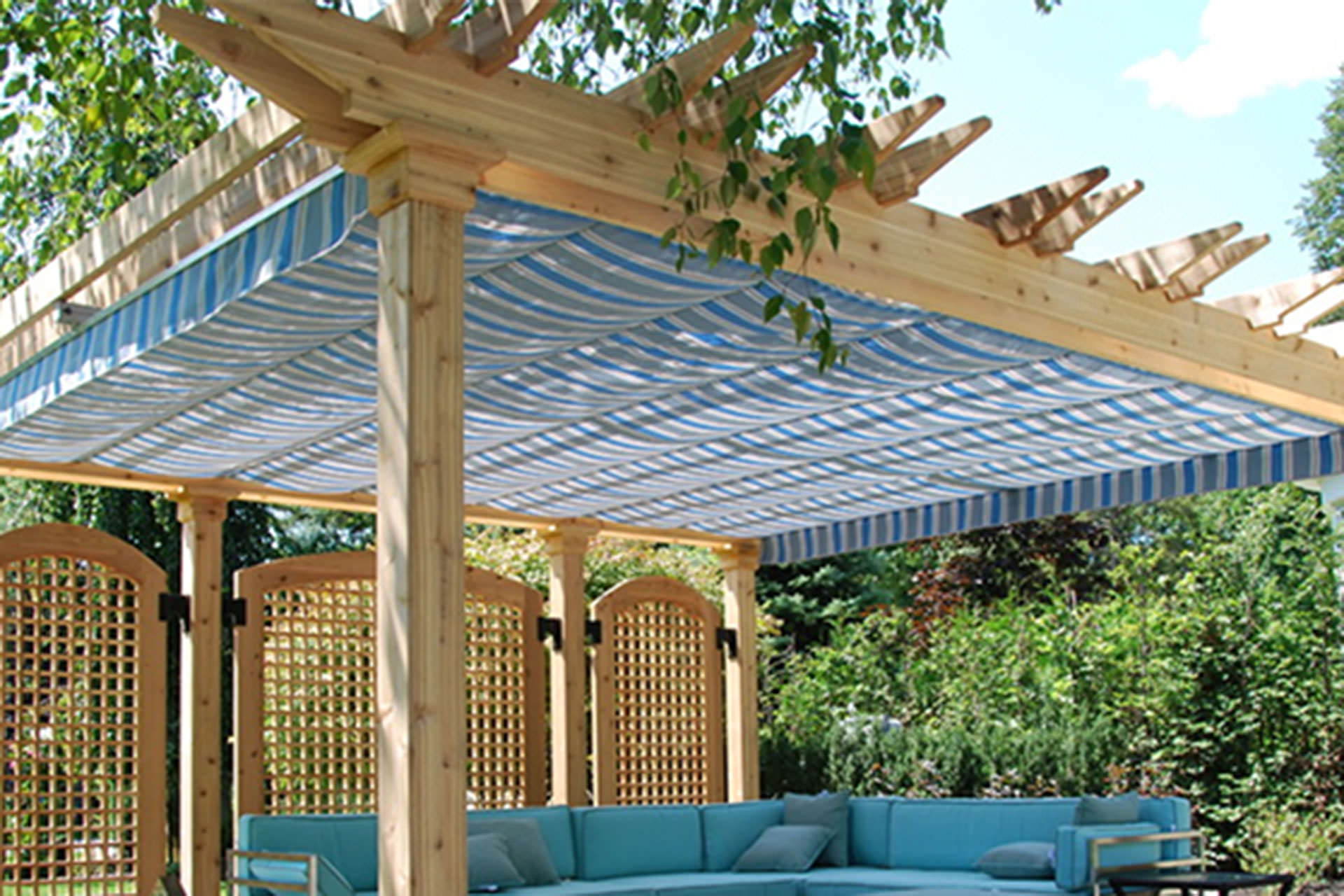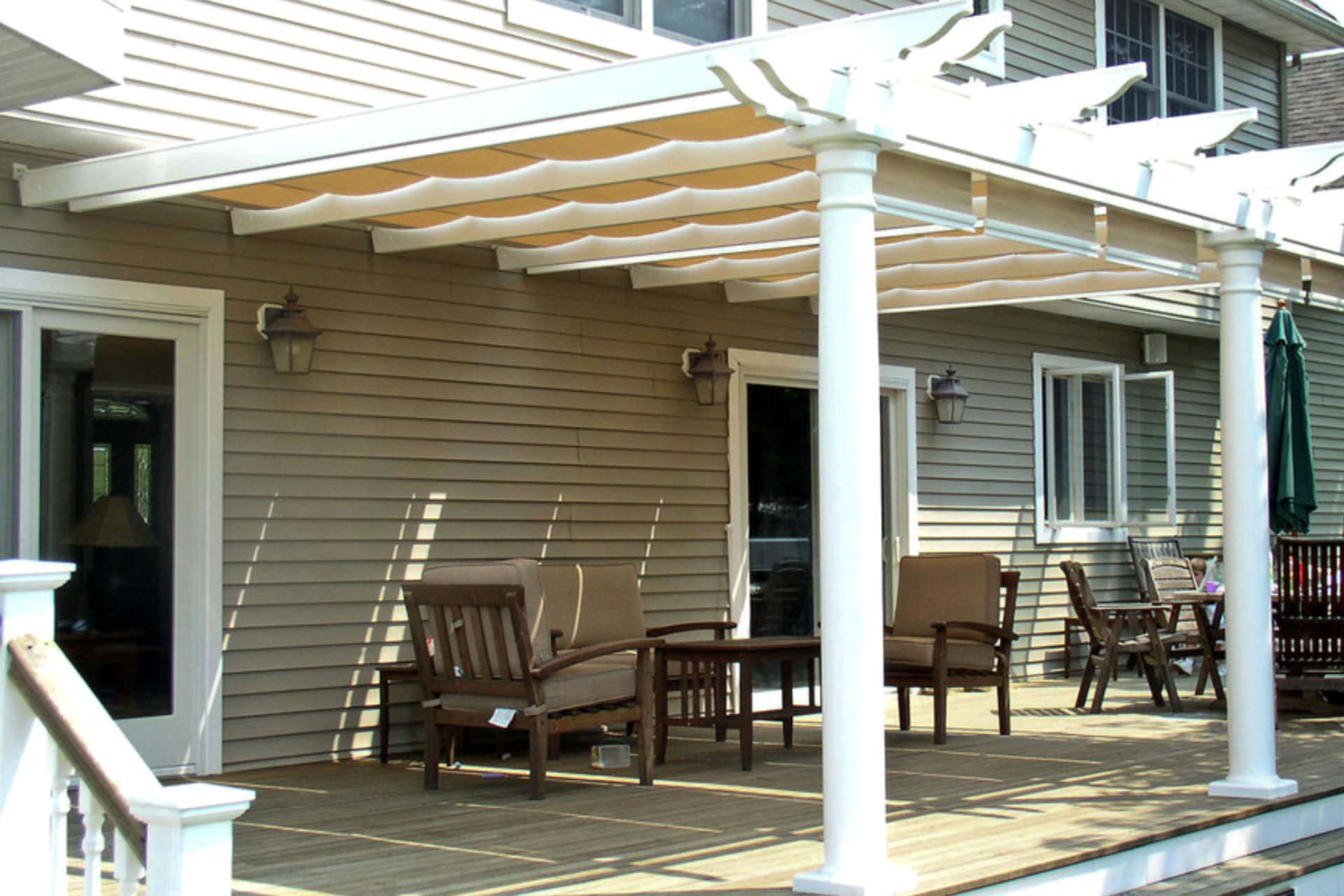Choosing a Retractable Canopy Track: Single, Multi, Cable, or Roll?
When shopping for a canopy system to attach to your outdoor structure, you will find there are a number of different retractable canopy tracks. Some products roll the fabric into a cartridge and stretch it out with a bar and cables. Others use tracks with sliders in them. The following will highlight these mechanisms and how to choose the one best for you.
Comparing Retractable Canopy Tracks
Firstly, the mechanisms operate quite differently, depending on what they are being asked to do. So, let’s lay them out in a chart to speed up your search for what’s relevant for you. Below the chart, you can read more about each retractable canopy track.
| Sun | Rain | Wind | Wood Frames | Max Length | Max Width | Motor Option | |
| Roll up | Y | N | N | Y | 18’ | >20’ | Y |
| Cable | Y | N | N | N | >20’ | <10’ | N |
| Single Track | Y | Y | Y | Y | 48’ | >100’ | Y |
| Multiple Track | Y | Y | Y | N | 48’ | 42’ | Y |
Roll Up

These systems are essentially a roll retractable awning. They are positioned to operate horizontally, instead of having arms pull the fabric out, you have cables and runners. The best feature of this system is the compact storage size when retracted, and the fact that the fabric is rolled up and fully contained for the off-season (aka winter). The shortcoming is that the fabric is self-supported with tension. This makes it susceptible to both wind and rain. As a result, this is not a good solution in windy locations or if you wish to protect cushioned furniture from the rain. More importantly, if it is subjected to rain, water cannot drain over the edge of the fabric unless the system is on a slope. This severely limits their integration with pergolas. This will also cause it to fill up with water, potentially resulting in permanent damage to the fabric by stretching it. If you live in Arizona or Hawaii, this is a good product to consider. These systems are not affected by frame geometry. If something shifts after installation they will still work fine.
Cable Slide

Since the Romans, this method of operating an overhead shade screen has existed. It works well as long as the climate is dry, and the wind is low. This type is limited to small areas of coverage unless you are happy with sagging cables. Cable systems can be tensioned enough to operate large canopies over long spans, but to do so requires a lot of tension that most pergolas are not designed for it. For this reason, you will see large commercial installations anchoring tension cables to heavy steel posts in concrete, but few on pergolas. This is a poor solution for projects that are not using steel frames. These systems can be affected by frame geometry. If something shifts after installation where the cables shift apart, they will jam and bind.
Single Track Slide

Suspended by a single track in the middle, these canopies can cover large areas and are resistant to both heavy winds and rain . This inherently causes the high point of the canopy to be in the middle allowing rain shed on either side by gravity. To ensure they don’t swing around uncontrolled in the wind, they use ‘guides’ called stabilizers to capture the canopy and limit motion. Because the fabric is fan folded from bars every 24 inches, they do not rely on tension to support the canopy from front to back, this makes them particularly resistant to wind. These systems are not affected by frame geometry. If something shifts after installation they will still work fine because a one track cannot misalign with itself. They are also particularly easy to install with a minimum of attachment points.
Multiple Track Slide

These canopies can also cover large areas and resist heavy wind and rain but they do so in multiple panels. They don’t swing around uncontrolled in the wind because the multiple track hold the fabric support guides level. They do have to be installed carefully to ensure the tracks are both level with each other (planar) and parallel to each other. This can be troublesome on outdoor frames that will move over time due to frost heaving, humidity expansion, and settling stresses. Therefore these systems are greatly affected by frame geometry. If something shifts after installation they will bind or jam. Manufacturers of these systems may provide aluminum frames for them to avoid these difficulties however this is an aesthetic compromise beyond what most designers are comfortable with. Multi tracked systems are also particularly difficult to install with the need to both align and level the tracks relative to each other. That’s two tracks, both level and both aligned. 6 variables. Some multiple track systems are limited to 6’ of width per canopy. This means an 18’ wide cover would require 6 tracks. Again, these tracks are more like beams and can compromise discerning design requirements. Two track systems have been around for a long time and they are not very prominently seen on outdoor structures such as pergolas…Perhaps this is why.
Retractable Solutions for Outdoor Spaces
Please complete the form below to download our free eBrochure.
Price List included
Related Posts
March 14, 2014
‘Gimme Shelter’: The ShadeFX Retractable Canopy
December 12, 2012
ShadeFX Canopies Take on High Winds of Hurricane Sandy
June 16, 2012




I have a wooden deck, 24 ft wide and 14 ft long. I would like the single track slide and the roll up, and also the wire system, but want as little obstruction above in order to roll it away at night and see the stars.. What would you recommend, and how far apart can I space the rollers?